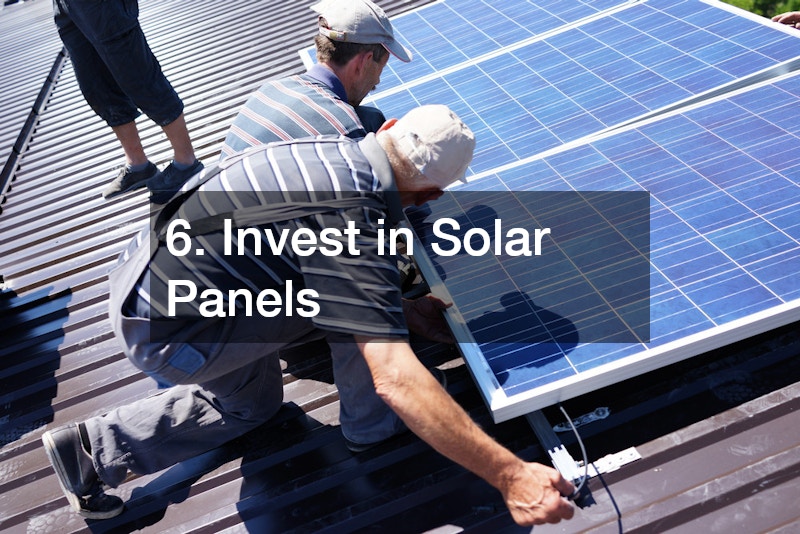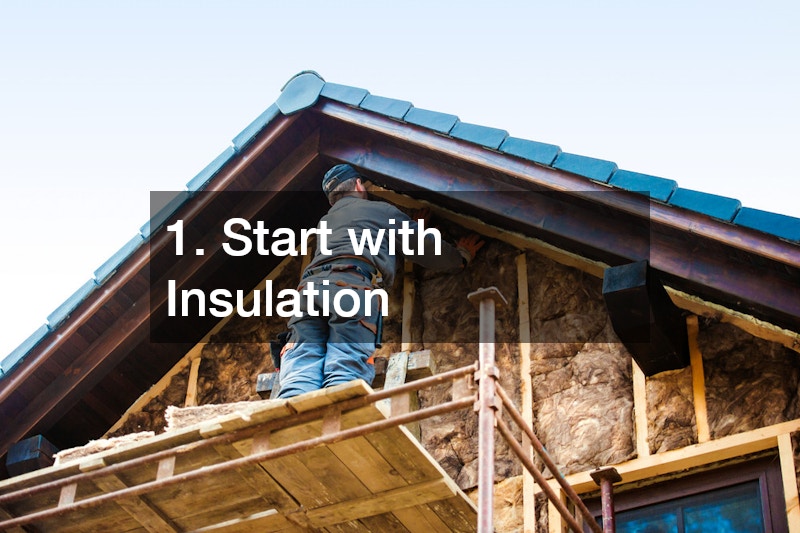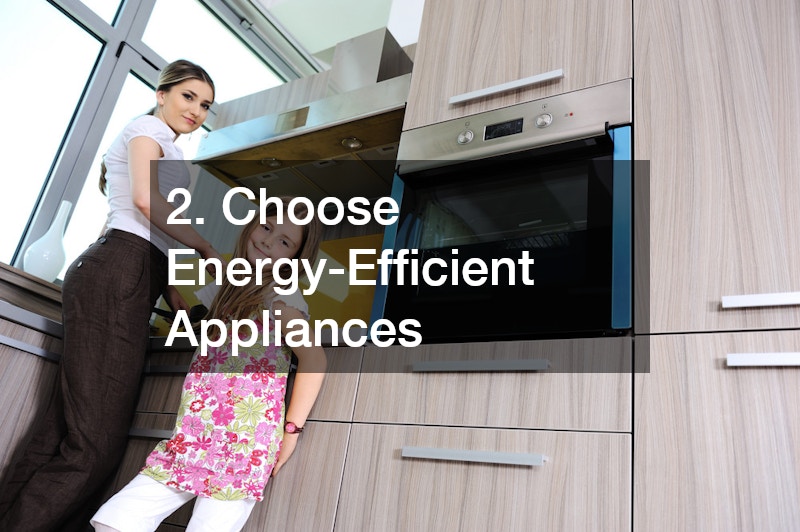
Homeownership comes with the responsibility of maintaining your property while also ensuring that it retains its value over time. One of the most effective ways to do this is by making smart upgrades that not only enhance the aesthetic and functional appeal of your home but also minimize your utility bills. By focusing on energy efficiency and sustainability, you can achieve long-term savings while boosting your home’s market value. Here are ten ways to maximize your home’s value while cutting down on utility costs.
1. Start with Insulation
Insulating your home properly allows it to maintain a stable indoor temperature throughout the year. In the winter, good insulation prevents heat loss, while in the summer, it keeps cool air inside. This means your heating and cooling systems won’t have to work as hard to maintain a comfortable environment, resulting in significant energy savings. The longer your home retains heat or coolness, the less energy your HVAC system needs to use, which leads to lower utility costs.
Common Areas to Insulate
The most common areas that need insulation in a home are the attic, walls, floors, and basement. These areas account for a significant portion of your home’s overall energy efficiency. By focusing on these key areas, you can drastically improve your home’s insulation and energy savings.
Attic:
Since heat rises, the attic is one of the most critical areas to insulate. Proper attic insulation helps prevent heat loss in the winter and reduces heat gain in the summer.
Walls:
Insulating your walls ensures that temperature-controlled air remains inside your living spaces, preventing drafts and making it easier to maintain a comfortable temperature.
Floors:
Insulating floors—especially above unheated spaces like crawl spaces or garages—can help keep your home warmer in the winter and cooler in the summer.
Basement:
Basements are often overlooked, but they can be a major source of energy loss. Insulating basement walls and floors helps maintain consistent temperatures throughout the home.
Choosing the Right Insulation Material
When it comes to insulation materials, there are several options available, each with its unique benefits. The most common insulation types include fiberglass batt, blown-in cellulose, and spray foam. Each material can be tailored to specific areas in your home, making it essential to choose wisely for optimal results.
Fiberglass Batt:
A traditional and cost-effective option, fiberglass batt insulation is suitable for walls and attics. It is easy to install and provides good thermal resistance.
Blown-in Cellulose:
Often used in attics and wall cavities, cellulose is a more environmentally friendly option, made from recycled paper products. It provides excellent coverage and is effective in filling gaps.
Spray Foam:
One of the most efficient options for insulating difficult-to-reach spaces, spray foam insulation expands on contact, filling gaps and cracks completely. Spray foam offers superior air sealing properties, preventing drafts and heat loss, making it ideal for attic and wall insulation. Professional spray foam insulation services can help ensure that this material is applied correctly and effectively in your home.
No matter which insulation material you choose, ensuring that all areas of your home are properly insulated will contribute significantly to long-term energy savings and increased comfort.
2. Choose Energy-Efficient Appliances
When upgrading appliances in your home, opting for energy-efficient models can be one of the most impactful ways to reduce your utility bills. Energy-efficient appliances consume less electricity and water while performing at the same level as their non-efficient counterparts. These include refrigerators, dishwashers, washing machines, and even air conditioning units. Look for appliances with the ENERGY STAR label, as these have been certified to meet strict energy efficiency standards.
Although energy-efficient appliances might come with a higher initial cost, they can pay for themselves over time through reduced utility bills. For instance, a high-efficiency washer uses significantly less water and energy per load, saving both on water bills and electricity. Over the long term, these savings will accumulate, making the higher upfront investment worthwhile. Energy-efficient appliances can also increase the overall market value of your home, especially as buyers are increasingly looking for homes with lower operating costs. Moreover, because energy-efficient appliances tend to be more reliable and durable, they may require fewer appliance repairs, ultimately saving you money on maintenance and prolonging the lifespan of your household devices.
3. Install Smart Thermostats
Smart thermostats are one of the easiest ways to reduce your heating and cooling costs while also increasing your home’s value. These devices allow you to program your thermostat to automatically adjust temperatures when you’re not at home, ensuring that you’re not wasting energy. Many models can even learn your daily habits and adjust accordingly, further optimizing energy use without you having to lift a finger. As part of a broader home automation system, smart thermostats can be integrated with other smart devices, making it easier to manage your home’s energy consumption more effectively.
Some popular types of smart thermostats include:
- Nest Learning Thermostat: Known for its sleek design, it learns your schedule and adjusts temperatures automatically.
- Ecobee Smart Thermostat: Includes a remote sensor to detect temperatures in different rooms, offering more precise control.
- Honeywell Home T9 Smart Thermostat: Offers customizable features and compatibility with Alexa and Google Assistant for voice control.
A smart thermostat can also be controlled remotely via smartphone apps, allowing you to adjust settings from anywhere. This is especially useful for managing energy consumption when you’re on vacation or away for an extended period. By preventing unnecessary heating or cooling when not needed, smart thermostats can reduce your energy consumption by up to 10% annually, resulting in lower utility bills and an increased appeal for potential buyers looking for modern, efficient home features.
4. Seal Drafts

Drafts around windows, doors, and other openings can account for significant energy loss, leading to higher heating and cooling costs. Sealing these gaps with weatherstripping or caulk is a simple, cost-effective way to improve your home’s energy efficiency. Drafts are most commonly found around window and door frames, electrical outlets, and around ducts or vents. These gaps can let in hot air in the summer or allow warm air to escape in the winter, making your HVAC system work harder to maintain a comfortable temperature.
Sealing drafts is a straightforward DIY project that can pay off quickly. In addition to improving energy efficiency, sealing drafts also contributes to a more comfortable living environment. By blocking outside air from entering your home, you’ll maintain a more consistent indoor temperature. This not only saves energy but can also prevent the wear and tear on your heating and cooling system, leading to lower maintenance costs and longer-lasting equipment.
5. Switch to LED Lighting
Lighting makes up a significant portion of most home’s energy consumption. By replacing traditional incandescent light bulbs with LED bulbs, you can drastically reduce your electricity usage. LED bulbs use up to 80% less energy than incandescent bulbs and last up to 25 times longer. This not only helps reduce your utility bills but also means fewer bulb replacements, which is a great convenience.
While the initial cost of LED bulbs may be higher than traditional options, the energy savings and long lifespan make them an excellent investment. You’ll notice the difference in your utility bill almost immediately after switching to LED lighting. Furthermore, the increased energy efficiency can add to the overall value of your home.
Energy-conscious buyers are more likely to appreciate a home with LED lighting already installed, especially if they’re looking for ways to reduce their own energy consumption. If you’re planning a full lighting upgrade, an electrical contractor can guarantee proper installation and optimal placement of lighting for maximum efficiency and safety.
6. Invest in Solar Panels

One of the most substantial ways to lower your utility bills and boost your home’s value is by installing solar panels. Solar energy is a renewable resource that can dramatically reduce your electricity costs by harnessing the sun’s power. Solar panels convert sunlight into electricity, which can either be used to power your home or fed back into the grid for credits. The initial cost of solar installation can be high, but there are various incentives, rebates, and tax credits available that can significantly reduce the financial burden.
In addition to installing solar panels, many homeowners are opting for a solar roof battery backup system, which allows them to store excess energy generated during the day for use at night or during power outages. This adds another layer of energy independence and can further reduce reliance on grid power.
Solar panels and battery systems are becoming an increasingly attractive feature for potential homebuyers, particularly those who are eco-conscious or looking for ways to reduce energy costs. Many buyers consider solar power a long-term investment that will pay off in the form of lower utility bills. In some regions, homes with solar panels are known to sell for a premium, making them a solid way to enhance the overall value of your property. Over time, as the cost of solar technology continues to drop, more homeowners are likely to see the value in making the switch.
7. Upgrade Windows and Doors
Windows and doors play a crucial role in maintaining your home’s energy efficiency. Old, inefficient windows and doors can let out heat in the winter and allow cool air to escape in the summer, forcing your HVAC system to work harder to maintain comfort. By upgrading to energy-efficient windows and doors, you can reduce drafts and heat loss, ultimately lowering your energy bills.
Energy-efficient windows and doors come with special coatings and insulation that help to keep your home at a comfortable temperature year-round. Double-glazed windows, for example, have two layers of glass with a sealed air space in between, providing additional insulation. These upgrades also enhance your home’s curb appeal and overall aesthetic, making it more attractive to potential buyers. In fact, energy-efficient windows and doors can increase your home’s resale value and provide a return on investment in the long term.
8. Landscaping for Energy Efficiency
The landscaping around your home can have a significant impact on your energy consumption. Strategic planting can provide shade in the summer, reducing the amount of heat that enters your home and thus lowering your cooling costs. For instance, planting trees or shrubs on the east and west sides of your home can block the sun’s rays during the hottest parts of the day.
Apart from cooling benefits, landscaping can also help protect your home from wind. Planting evergreen trees or hedges on the north side of your home can act as a windbreak during the colder months, reducing the amount of heat loss through your walls and windows. Sustainable landscaping practices such as using native plants can also reduce water usage, contributing to both energy and water conservation. If you have mature trees on your property or need help with strategic planting, consulting with tree services can help ensure the right trees are placed in the right spots for maximum efficiency. Thoughtful landscaping not only enhances your home’s beauty but also adds functional value that can save you money over time.
9. Prioritize Water Conservation
Water conservation is an essential part of reducing your utility bills and increasing your home’s value. By implementing a few simple strategies, you can minimize water consumption while maintaining the functionality of your home.
Low-Flow Fixtures
One of the most effective ways to reduce water usage is by installing low-flow fixtures in your home. Showerheads, faucets, and toilets designed to use less water can significantly cut down your consumption without sacrificing performance. These fixtures are widely available and can be easily installed in existing plumbing systems, offering an immediate impact on your water bills.
Water-Efficient Appliances
Upgrading to water-efficient appliances like dishwashers and washing machines is another step towards lowering both water and energy usage. These appliances are designed to use less water per cycle while still offering excellent performance, which helps reduce both your water and energy bills. Over time, the savings on utility costs will offset the initial investment in these efficient appliances.
Rainwater Harvesting Systems
For an even more sustainable solution, consider installing a rainwater harvesting system. This efficient system collects and stores rainwater, which can be used for outdoor activities such as watering your garden or lawn. This reduces your reliance on municipal water, which can be expensive, especially during the hot summer months when demand is high. Not only does this practice conserve water, but it also helps lower your utility bills.
Addressing Water Leaks
Water conservation also involves identifying and addressing any hidden water leaks in your home. Leaks can waste significant amounts of water, driving up your utility bills. Scheduling leak detection services ensures that any leaks are promptly detected and repaired. If you suspect any plumbing issues, consulting with plumbers can help you maintain your system, ensuring that water is used efficiently and preventing costly water wastage.
By implementing these water-saving practices throughout your home, you contribute to the conservation of this valuable resource. Sustainable water management can make your home more attractive to potential buyers who are becoming increasingly aware of the environmental and financial benefits of water conservation.
10. Stay on Top of Regular Maintenance
Finally, one of the most important ways to ensure that your home maintains its value while minimizing utility costs is by staying on top of regular maintenance. Regular upkeep of your heating and cooling systems, appliances, plumbing, and electrical systems ensures that everything is functioning optimally, preventing costly repairs and inefficient energy use.
HVAC System Maintenance
One of the most critical systems in your home is your HVAC system. Regular maintenance, such as replacing HVAC filters and cleaning the ducts, can significantly improve the efficiency of your heating and cooling system. Moreover, checking for leaks in the ducts can prevent energy loss, which helps lower your heating and cooling costs. To keep your HVAC system running smoothly, schedule HVAC services with a professional who can perform thorough inspections and maintenance.
Plumbing and Water Heater Care
Maintaining your plumbing system and water heater is also essential to reducing utility costs. Regularly checking for leaks in your plumbing can prevent wasted water and costly repairs. Ensuring that your water heater is properly maintained and insulated can help it operate more efficiently, lowering energy usage and your utility bills.
By prioritizing routine maintenance across all your home’s systems, you can rest assured that everything operates efficiently. This not only keeps your utility bills low but also extends the lifespan of your efficient systems, protecting your home’s value over time.
Final Thoughts
Maximizing your home’s value while minimizing utility bills requires a combination of smart upgrades and regular maintenance. By starting with insulation and choosing energy-efficient appliances, you can create a solid foundation for reducing your home’s energy consumption. Installing smart thermostats, sealing drafts, and upgrading to LED lighting are all simple steps that can make a big difference in energy efficiency. Additionally, investing in solar panels, upgrading windows and doors, and landscaping for energy efficiency further contribute to long-term savings and increased home value.
Prioritizing water conservation and staying on top of regular maintenance ensure that your home continues to operate efficiently, saving you money and enhancing its market appeal. With these ten strategies, you’ll not only reduce your utility bills but also create a more comfortable and sustainable living environment that will continue to pay off for years to come.





